Kenneth A Browne
age ~54
from Dayton, OH
- Also known as:
-
- Ken A Browne
- Kenneth A Brown
- Kenny Browne
Kenneth Browne Phones & Addresses
- Dayton, OH
- 402 Blueridge Pl, Escondido, CA 92026 • 7602949131
- 1757 Arroyo Gln, Escondido, CA 92026 • 7602949131
- 10914 Poblado Rd, San Diego, CA 92127 • 8585210593
- Oceanside, CA
- San Marcos, CA
- Poway, CA
- Riverside, CA
- 4195 Jackdaw St, San Diego, CA 92103 • 6198920411
Work
-
Position:Protective Service Occupations
Education
-
Degree:High school graduate or higher
Isbn (Books And Publications)




Resumes

Kenneth Browne
view source
Kenneth Browne
view source
Advanced Cost Estimating Concepts Using Value Engineering Methods
view sourceLocation:
United States
Industry:
Insurance

Kenneth Browne Enid, OK
view sourceWork:
Burger King
Enid, OK
Sep 2014 to Jan 2015
Crew member The Doctors Office
Vista, CA
Dec 2013 to Jan 2014
Scanner
Enid, OK
Sep 2014 to Jan 2015
Crew member The Doctors Office
Vista, CA
Dec 2013 to Jan 2014
Scanner
Education:
Pacific View Charter
Oceanside, CA
2011 to 2013
Diploma
Oceanside, CA
2011 to 2013
Diploma

Kenneth Browne Poway, CA
view sourceWork:
Radian Biotechnology
Mar 2014 to 2000
Sr. Principal Scientist Gen-Probe Incorporated
San Diego, CA
2013 to 2013
Sr. Manager/Staff Scientist Contractor, Development Gen-Probe Incorporated
San Diego, CA
2008 to 2013
Sr. Manager/Staff Scientist Gen-Probe Incorporated
San Diego, CA
2003 to 2008
Senior Scientist/Technology Analyst Gen-Probe Incorporated
San Diego, CA
1998 to 2003
Research Scientist, R&D University of California at Los Angeles/University of South Carolina
1995 to 1997
Assistant Professor of Research/Postdoctoral Fellow University of California
Santa Barbara, CA
1989 to 1995
Graduate Student The Scripps Research Institute
La Jolla, CA
1987 to 1989
Research Technician La Jolla Cancer Research Foundation (now Sanford-Burnham Medical Research Institute)
La Jolla, CA
1984 to 1987
Research Assistant/Technician
Mar 2014 to 2000
Sr. Principal Scientist Gen-Probe Incorporated
San Diego, CA
2013 to 2013
Sr. Manager/Staff Scientist Contractor, Development Gen-Probe Incorporated
San Diego, CA
2008 to 2013
Sr. Manager/Staff Scientist Gen-Probe Incorporated
San Diego, CA
2003 to 2008
Senior Scientist/Technology Analyst Gen-Probe Incorporated
San Diego, CA
1998 to 2003
Research Scientist, R&D University of California at Los Angeles/University of South Carolina
1995 to 1997
Assistant Professor of Research/Postdoctoral Fellow University of California
Santa Barbara, CA
1989 to 1995
Graduate Student The Scripps Research Institute
La Jolla, CA
1987 to 1989
Research Technician La Jolla Cancer Research Foundation (now Sanford-Burnham Medical Research Institute)
La Jolla, CA
1984 to 1987
Research Assistant/Technician
Education:
University of California
Santa Barbara, CA
1995
Ph.D. in Organic Chemistry University of California
San Diego, CA
1987
B.A. in Biochemistry
Santa Barbara, CA
1995
Ph.D. in Organic Chemistry University of California
San Diego, CA
1987
B.A. in Biochemistry
Skills:
- Leadership, functional team organization and development, problem solving, collaborations - Communication (scientific writing, reviewing, presenting) - Competitive intelligence of established and new disruptive technologies for business development - Multiplex molecular diagnostic assay (NAAT) design and development - Analytical, physical organic and nucleic acid chemistries - Absorbance, fluorescence and luminescence spectroscopies
Wikipedia References

Kenneth Browne (Painter)
Us Patents
-
Process For Labeling A Nucleic Acid
view source -
US Patent:6902891, Jun 7, 2005
-
Filed:Dec 15, 2000
-
Appl. No.:09/736151
-
Inventors:Ali Laayoun - Lyons, FR
Lionel Menou - Lyons, FR
Christelle Tora - Lyons, FR
Aloke R. Banerjee - San Diego CA, US
Michael M. Becker - San Diego CA, US
Kenneth A. Browne - San Diego CA, US
Matthew C. Friedenberg - San Diego CA, US
Fred F. Hajjar - San Diego CA, US -
Assignee:Bio Merieux - Marcy l' Etoile
Gen-Probe Incorporated - San Diego CA -
International Classification:C12Q001/68
C12P019/34
C07H021/04
C07D225/00
C07D259/00 -
US Classification:435 6, 435 912, 536 253, 536 2531, 540465, 540474, 556 1, 556 6
-
Abstract:A process of fragmenting and labeling a synthetic or natural nucleic acid, comprising the steps of providing a mixture containing a nucleic acid, a labeling agent containing a detectable label, and at least one multivalent metal cation in a substantially aqueous solution; chemically fragmenting the nucleic acid in the mixture to produce a multiplicity of nucleic acid fragments; and attaching at least one label to at least one of the nucleic acid fragments to produce a detectably labeled nucleic acid fragment.
-
Inversion Probes
view source -
US Patent:7070933, Jul 4, 2006
-
Filed:Mar 14, 2003
-
Appl. No.:10/388918
-
Inventors:Kenneth A. Browne - Poway CA, US
-
Assignee:Gen-Probe Incorporated - San Diego CA
-
International Classification:C12Q 1/68
C12P 19/34
C07H 21/02
C07H 21/04
C07H 21/00 -
US Classification:435 6, 435 911, 536 231, 536 243, 536 2433, 536 253, 536 2532
-
Abstract:Unitary hybridization probes having stem-and-loop structures, wherein the stem portion of the structure comprises a pair of interactive arms that are substantially prevented from interacting with target polynucleotides. One arm of the invented parallel-stem hybridization probe has a backbone polarity opposite that of the target-complementary loop sequence of the probe. Rather than interacting in an antiparallel fashion, the arms of parallel-stem hybridization probes interact in a parallel fashion. The arms of the invented dual inversion probes interact in a conventional antiparallel fashion, but have backbone polarities opposite that of the target-complementary loop portion of the probe. Arm portions of the inversion probes do not substantially contribute to sequence-dependent stabilization of probe:target hybrids. Incorporating inversion linkages into the structures of these probes dramatically simplifies the process of designing stem-and-loop hybridization probes.
-
Device For Amplifying And Detecting A Target Nucleic Acid
view source -
US Patent:7582470, Sep 1, 2009
-
Filed:Jul 17, 2003
-
Appl. No.:10/621803
-
Inventors:Kenneth A. Browne - Poway CA, US
-
Assignee:Gen-Probe Incorporated - San Diego CA
-
International Classification:C12M 1/34
C12M 3/00
C07H 21/02
C07H 21/04
C12Q 1/68
C12P 19/34 -
US Classification:4352871, 435 6, 435 912, 4352872, 536 231, 536 243
-
Abstract:Compositions, methods and devices for detecting nucleic acids. The invention particularly regards composite arrays of immobilized amplification primers and hybridization probes. Also disclosed are compositions and methods for covalently immobilizing oligonucleotides and other biological molecules to glass and plastic surfaces.
-
Methods And Compositions For Quantitative Amplification And Detection Over A Wide Dynamic Range
view source -
US Patent:8628924, Jan 14, 2014
-
Filed:Jul 21, 2010
-
Appl. No.:12/840971
-
Inventors:Daniel L. Kacian - San Diego CA, US
Kenneth A. Browne - San Diego CA, US -
Assignee:Gen-Probe Incorporated - San Diego CA
-
International Classification:C12Q 1/68
C12P 19/34 -
US Classification:435 612, 435 912
-
Abstract:Disclosed are compositions and methods for making differentiable amplicon species at unequal ratios using a single amplification system in a single vessel. The number of differentiable amplicons and their ratios to one another are chosen to span the required linear dynamic range for the amplification reaction and to accommodate limitations of the measuring system used to determine the amount of amplicon generated. Unequal amounts of distinguishable amplicon species are generated by providing unequal amounts of one or more amplification reaction components (e. g. , distinguishable amplification oligomers, natural and unnatural NTP in an NTP mix, or the like). The amount of target nucleic acid present in a test sample is determined using the linear detection range generated from detection of one or more amplicon species having an amount within the dynamic range of detection.
-
Reagents, Methods And Kits For Use In Deactivating Nucleic Acids
view source -
US Patent:20050202491, Sep 15, 2005
-
Filed:Mar 4, 2005
-
Appl. No.:11/073085
-
Inventors:Norman Nelson - San Diego CA, US
Kenneth Browne - Poway CA, US
Lizhong Dai - San Diego CA, US
James Russell - Vista CA, US
Mark Filipowsky - San Marcos CA, US
Margarita Kaminsky - San Diego CA, US
Daniel Kacian - San Diego CA, US -
International Classification:C12Q001/68
A61K047/00 -
US Classification:435006000, 424661000, 424126000
-
Abstract:The present invention relates to reagents for use in deactivating nucleic acids and methods of making and using the same.
-
Nucleic Acid Amplification And Detection Method
view source -
US Patent:20050287591, Dec 29, 2005
-
Filed:Aug 24, 2005
-
Appl. No.:11/211231
-
Inventors:Kenneth Browne - Poway CA, US
-
International Classification:C12Q001/68
C12P019/34 -
US Classification:435006000, 435091200
-
Abstract:Method of amplifying and detecting a nucleic acid target molecule contained in a test sample using a device having amplification primers and detectably labeled hybridization probes immobilized on the same surface of a solid support. Soluble amplicons produced in an in vitro nucleic acid amplification reaction employing the immobilized amplification primers are detected by the immobilized hybridization probes. Surface-immobilized amplification primers and hybridization probes are maintained in fluid communication throughout the procedure.
-
Polynucleotide Detection Method Employing Self-Reporting Dual Inversion Probes
view source -
US Patent:20060246500, Nov 2, 2006
-
Filed:Jun 29, 2006
-
Appl. No.:11/477988
-
Inventors:Kenneth Browne - Poway CA, US
-
International Classification:C12Q 1/68
-
US Classification:435006000
-
Abstract:Method of detecting a target polynucleotide based on the use of dual inversion hybridization probes having stem-and-loop structures, wherein the stem portion of the structure comprises a pair of interactive arms that are substantially prevented from interacting with target polynucleotides. The arms of the dual inversion hybridization probes interact in a conventional antiparallel fashion, but have backbone polarities opposite that of the target-complementary loop portion of the probe. Arm portions of the dual inversion probes do not substantially contribute to sequence-dependent stabilization of probe:target hybrids. Incorporating inversion linkages into the structures of these probes dramatically simplifies the process of designing stem-and-loop hybridization probes.
-
Chemiluminescent Probes For Multiplex Molecular Quantification And Uses Thereof
view source -
US Patent:20120231459, Sep 13, 2012
-
Filed:Apr 12, 2012
-
Appl. No.:13/445780
-
Inventors:Kenneth A. BROWNE - Poway CA, US
Ian WEEKS - Cardiff, GB -
Assignee:GEN-PROBE INCORPORATED - San Diego CA
-
International Classification:G01N 21/76
C12N 7/00
C07D 401/12
C07D 219/06
C07H 21/04
C08B 37/00
C07H 5/06
C12N 1/00
C07K 17/02 -
US Classification:435 611, 436501, 435243, 4352351, 4353171, 546104, 530409, 530300, 536 231, 5361231, 530395, 536 187, 530396, 546103
-
Abstract:A novel method is disclosed for simultaneous detection and quantification of two or more nucleic acid targets, without need for amplification. The method depends on spectral-temporal resolution of chemiluminescence emitted from independent hybridization-induced chemiluminescent signal (HICS) probes. The utility of this method has been demonstrated by use of resolvable N-linked acridinium and 2,7-dimethoxyacridinium ester labeled probes in a homogeneous assay for sensitive and simultaneous independent quantification of several bacterial and fungal target sequences. Compositions and kits for practicing the method of the present invention are also disclosed.
License Records
Kenneth Murle Browne Md
License #:
8432 - Expired
Category:
Medicine
Issued Date:
Nov 14, 1944
Effective Date:
Oct 1, 1990
Type:
Physician

Kenneth Browne Memorial P...
view source
Kenneth Browne
view source
Kenneth Browne
view source
Kenneth Browne
view source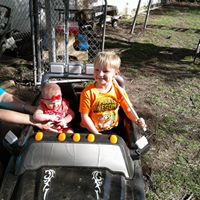
Kenneth Browne
view source
Kenneth Browne
view source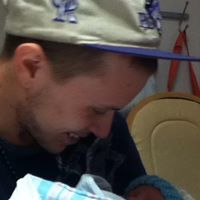
Kenneth Browne
view source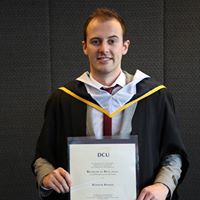
Kenneth Browne
view sourceMyspace
Googleplus

Kenneth Browne

Kenneth Browne

Kenneth Browne
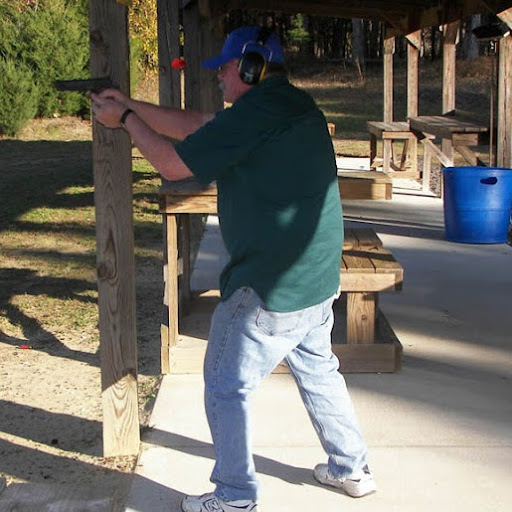
Kenneth Browne
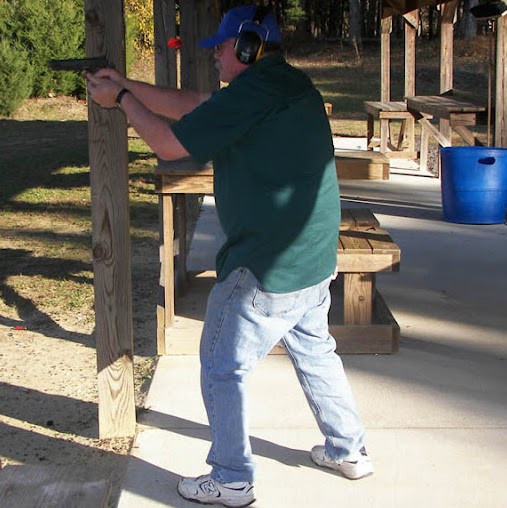
Kenneth Browne

Kenneth Browne

Kenneth Browne

Kenneth Browne
Flickr
Youtube
Classmates

Kenneth Browne
view sourceSchools:
Jordan Free Academy Jordan NY 1950-1954
Community:
Jack Holton, Judith Smart, Gerald Jaton, Robert Seales, David Grabowski

Kenneth Nathaniel Browne
view sourceSchools:
Hempstead High School Hempstead NY 1975-1979
Community:
Cheryl Fleming, Marcia Harth

Kenneth Browne
view sourceSchools:
Our Lady of Angels School Brooklyn NY 1947-1956
Community:
Mark Ennis, John Morse, Edmund Demeo

Kenneth Browne | Spring H...
view source
Jordan Free Academy, Jord...
view sourceGraduates:
Kenneth Browne (1950-1954),
Joanne House (1943-1947),
Mustafa Danial (2004-2008),
Lois Hierholzer (1951-1955),
Ronald Hawker (1955-1959)
Joanne House (1943-1947),
Mustafa Danial (2004-2008),
Lois Hierholzer (1951-1955),
Ronald Hawker (1955-1959)

Satellite Academy High Sc...
view sourceGraduates:
Richard Figueroa (1997-2001),
James Nieves (1992-1996),
Clarissa Cordner (1984-1988),
Anthony Silva (1969-1973),
Kenneth Browne (1972-1976)
James Nieves (1992-1996),
Clarissa Cordner (1984-1988),
Anthony Silva (1969-1973),
Kenneth Browne (1972-1976)

Laval High School, Placen...
view sourceGraduates:
Kenneth Foley (1980-1984),
Brad Picco (1993-1997),
Gary McLennon (1968-1972),
Danny Browne (1990-1994),
Ken Browne (1983-1987),
Geraldine Power (1965-1969)
Brad Picco (1993-1997),
Gary McLennon (1968-1972),
Danny Browne (1990-1994),
Ken Browne (1983-1987),
Geraldine Power (1965-1969)

Fairmont Elementary Schoo...
view sourceGraduates:
Kenneth Kasch (1971-1973),
Lisa Zasso (1973-1980),
Ron Maher (1964-1967),
Ken Browne (1965-1974),
Angela Michaud (1994-1996)
Lisa Zasso (1973-1980),
Ron Maher (1964-1967),
Ken Browne (1965-1974),
Angela Michaud (1994-1996)
Get Report for Kenneth A Browne from Dayton, OH, age ~54















